If you’re here, you’ve likely heard about the sourdough float test. In this post, we will go over what the float test is, how to use it, and what to keep in mind when considering the results.
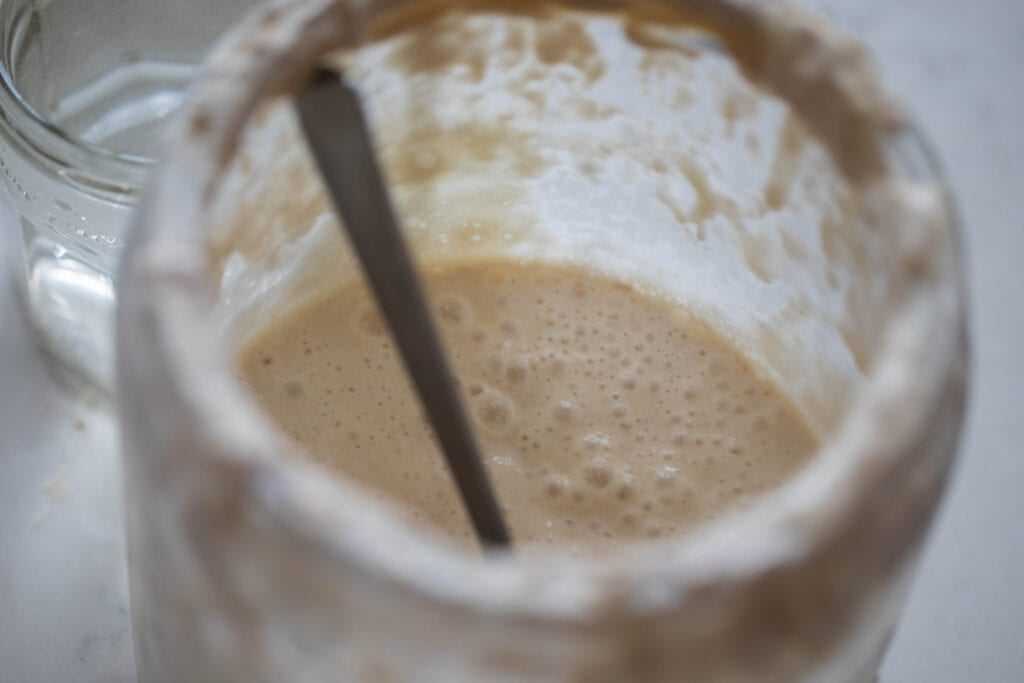
I’ve been baking sourdough for years now. I love the process and I love the delicious breads and various bakes, but I also love the knowledge I’ve gained through all my trial and error.
It feels good to not be completely new to this craft anymore, because the beginning, while fun and new, sure has lots of questions and second-guessing.
Speaking of questions, if you’re wondering how to get into this world of all things sourdough, check out my post on how to make a sourdough starter.
While I’m not saying I never have questions anymore, years of experience sure make things easier to diagnose.
So on that note, there are many times when I’ve needed to know if my starter is ready for baking. With my starter being the means behind getting my bakes to rise, I need it to be at its peak.
That’s where the float test comes into play.
If you don’t know what it is, a float test might seem like an odd term when we’re talking about baking.
So, what is it?
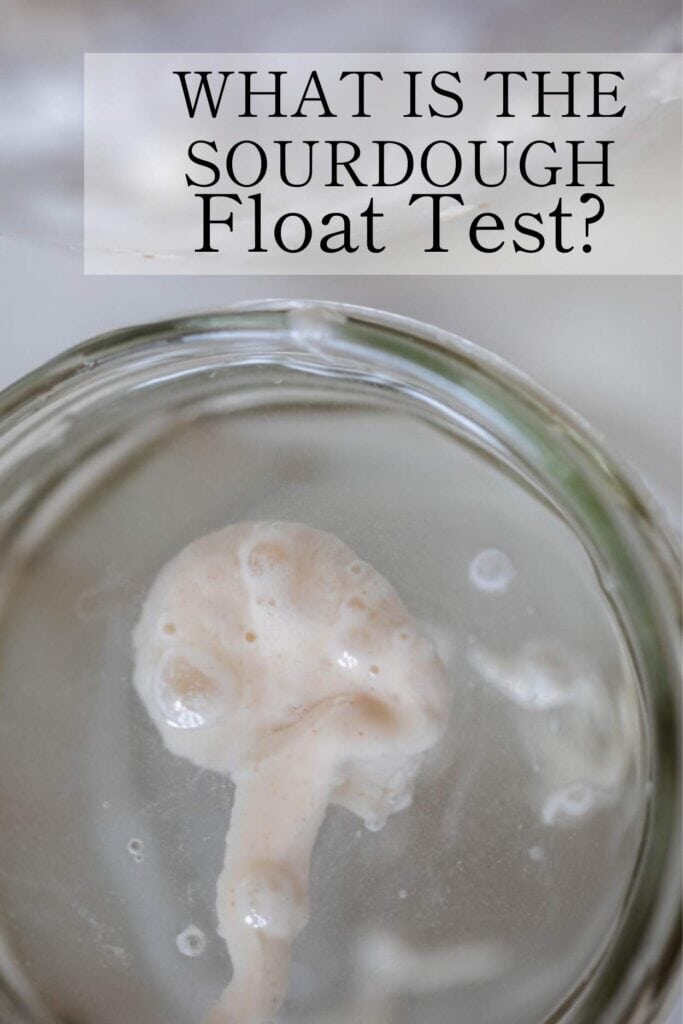
Sourdough Float Test
This is a method for measuring the readiness of your sourdough starter in order to achieve a healthy rise. While it’s certainly not foolproof, it can be helpful.
By dropping a spoonful of your starter into a glass of room temperature water, you’ll find that either your sourdough starter floats or it settles to the bottom.
The outcome is indicating whether your starter is holding enough gas bubbles to bring about rise.
If it floats, it’s presumably at its peak activity and contains lots of bubbles of carbon dioxide, the result of happy, thriving, natural yeast.
If it sinks to the bottom, the starter is presumably not ready, requiring further time and feedings before use in your sourdough recipes.
I say presumably, because as I said previously, it’s not foolproof. This might not always be the best way to test your starter’s readiness, but it is a quick and somewhat consistent way.
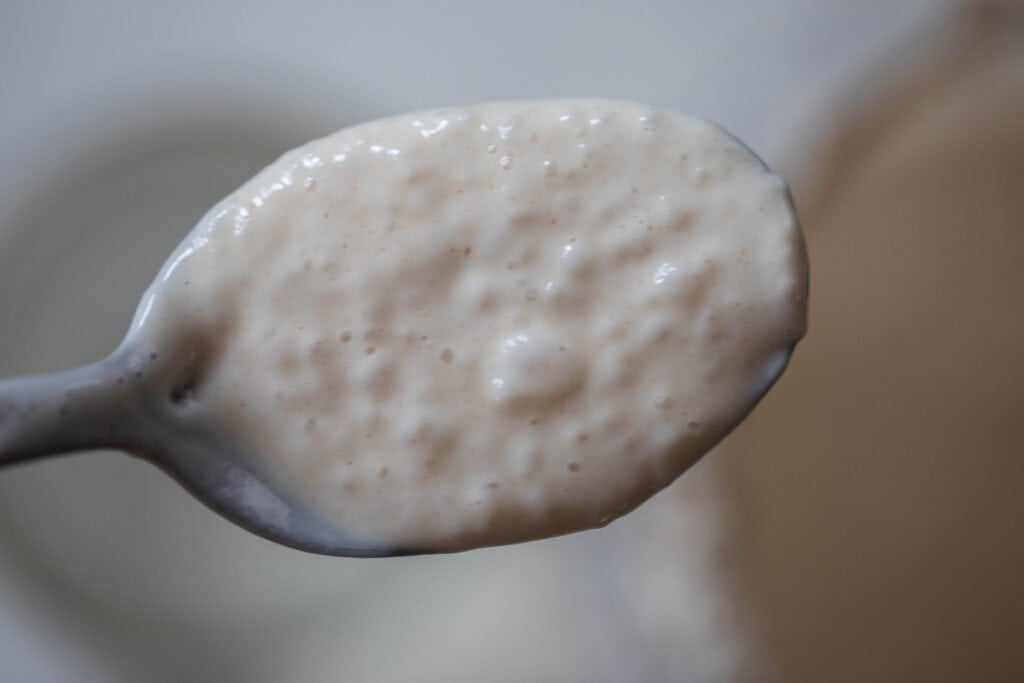
Tips for Best Results
A mature starter: A mature starter has had the time to develop into a strong starter, ready to work. It has been fed well and is visibly, happily, working. Starters less than 4 weeks old haven’t had time to achieve this.
Gentle transfer: When taking a spoonful to test, be careful not to stir or disrupt the bubbles. We want to keep as many as possible for a fair result. Gently plop this sample into your glass of water.
Peak activity: A starter is at its peak around 4 to 6 hours (sometimes even around 12 hours) after feeding, making this the best time to implement the float test. This depends on the environment and maturity of the starter, of course, and does not refer to a refrigerated starter.
Pancake batter consistency: A thin, runny starter will not trap air bubbles like a thicker starter. Pancake batter is a pretty relatable comparison to a good starter consistency, which will be achieved via your flour/water feeding ratio.
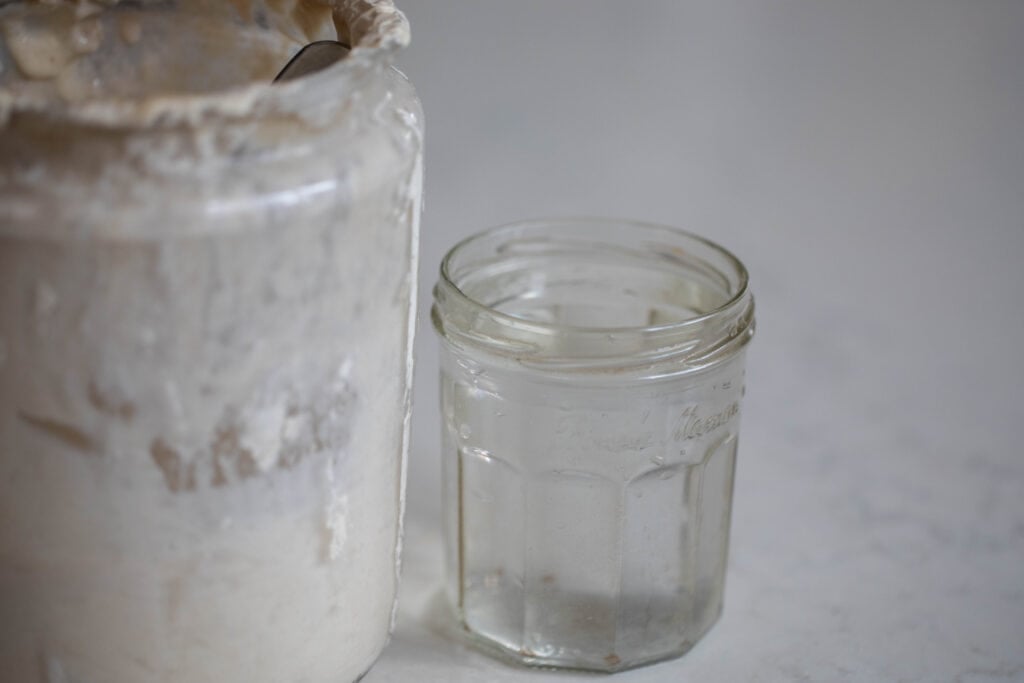
How to Maintain a Good Starter Consistency
A runny starter doesn’t necessarily mean a weak starter, but you also may not get the results you’re looking for in this state. Here are some considerations.
- A thin starter might be one that is consuming the flour and water too quickly due to an environment that is too warm. Can you keep your starter in a cooler place? Direct sunlight is helpful when I’m wanting to promote a quick rise, but it is probably too much heat for your starter’s day to day location.
- It could be that your feeding ratio is off, and you need to increase the flour and water measurements. It’s a good idea to measure your feedings by weight if you’re having difficulty with the consistency. A typical feeding might look like 1:1:1, which is one part starter, one part water, and one part flour. A thin starter might benefit from increasing the flour for a time to a higher ratio, such as 1:1:2.
- In addition to feeding ratios, be sure that you are feeding your starter consistently. If it is thin, it may need to be fed more often. The timing of your feedings will play a significant role in your starter’s condition.
- Another consideration is that whole grain flours will activate the yeast much more quickly, while low protein flour works more slowly. Generally speaking, the more protein in a flour, the higher the gluten content. The higher the gluten content, the more quickly your yeast will get to work and the better your rise will be.
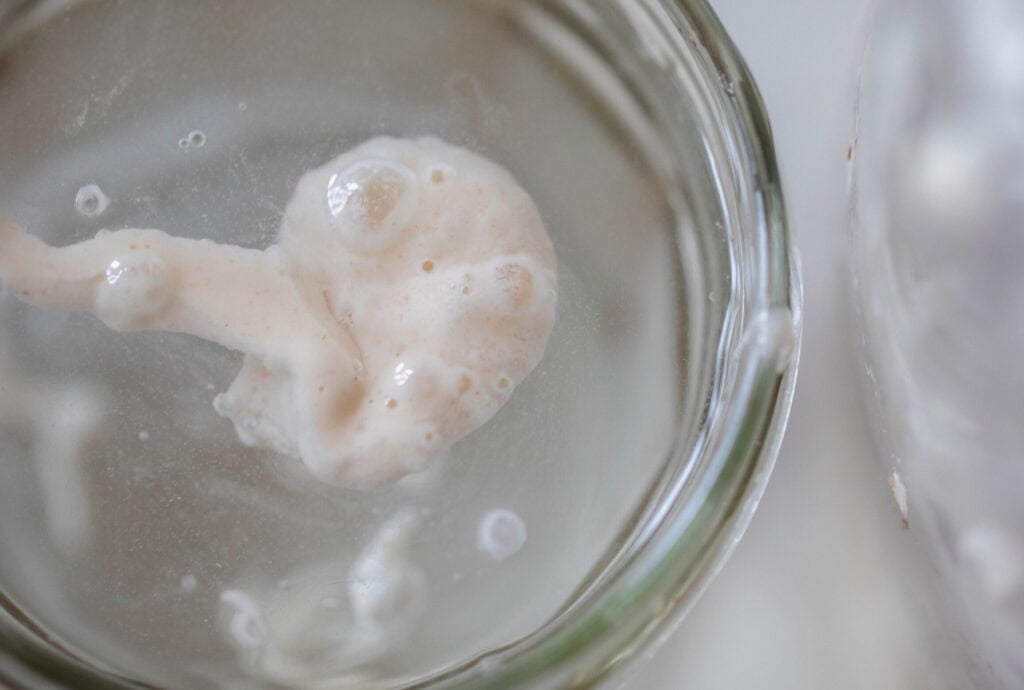
When the Float Test May Fail
Several factors contribute to the float test not being the most dependable.
A new starter: A young starter hasn’t yet developed the strength needed to rise your bread dough. Keep track of its age, continue a consistent feeding schedule, and keep it in a warm spot to encourage activity.
The bubbles were disrupted: When adding a sample of starter to the water, take care not to stir. Gently transfer with a spoon, and carefully place into the water.
Too much contact can pop those little bubbles, causing even a mature, active starter to fail the test when the sample sinks. This would be an example of a false negative – a failed test with a starter that is ready for a bake.
Type of flour: Some flours aren’t as suitable for the float test. Lower gluten flours, such as whole wheat flour or rye flour, may not build a strong gluten network that holds in those bubbles which cause it to float, yet the starter may very well be ready to go.
Past its peak: If you’ve missed the peak of your fed starter before testing, your sample may not float, yet your bake may rise perfectly well.
Consistency: The consistency of your starter can influence its results. Perhaps you’ve tested a young, stiffer starter, and it floats. The thicker consistency can allow more bubbles to be trapped and held, yet your starter may not be ready and you’ll have a bad bake. We would call this a false positive.
Since there are several ways that this test might not tell the full story, it’s a good idea to have other ways of testing.
Find More Sourdough Basics:
- Sourdough Hydration: How To Make Delicious Bread
- How To Bake Sourdough Bread Without a Dutch Oven
- Sourdough Scoring – How To Make Beautiful Sourdough Bread
- How To Store Sourdough Starter
- Maintaining and Feeding A Sourdough Starter
Other Methods of Bake Readiness
Age and history: Knowing your starter’s age and history gives you a strong idea on whether the pass or fail of your starter was warranted. If it’s well fed, produces consistent rises in other bakes, and is several months (or years) old, it’s likely you’re good to go.
Volume test: Measuring the volume of your starter within 6 hours of feeding is a strong indicator of starter readiness. It helps to mark the beginning level of your starter with a rubber band around your jar (or erasable marker, tape, etc).
Approximately 4 to 6 hours after feeding, note the volume of the starter, and whether it has doubled, more than doubled, or remained the same. It’s helpful to be familiar with when the height of the starter is at its peak after feeding, as well as when it falls after hitting its peak. A starter kept in a cooler spot will take a long time compared to one kept in a warm environment.
Visible activity: Another good way to know if your starter is ready is by observing any activity on the top. An active starter will be bursting with bubbles and foam, rather than a smooth, placid surface.
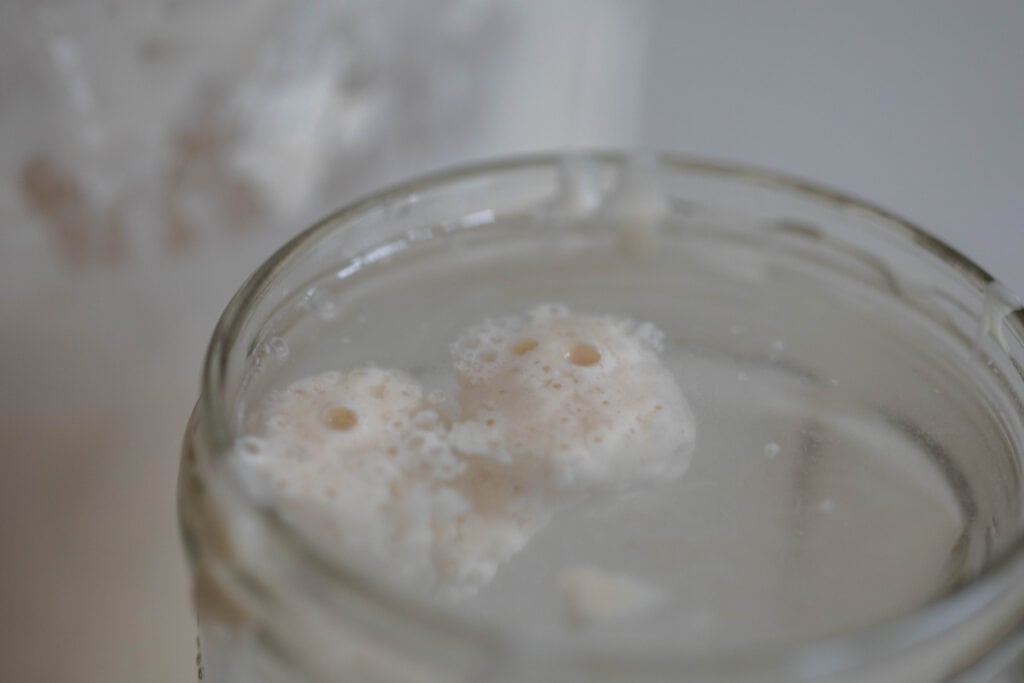
FAQ
If your starter floats, you can quickly consider the other indicators: do you have plenty of bubbles? foam on top? did your starter double after being fed? is it well-established and not a brand new starter? If you’re answering yes, move right on to baking some great bread!
If you’ve been attentive to your sourdough starter for any length of time, you’ll have begun to see the pattern of its needs and activity. With this in mind, the float test can be a quick way to double-check or confirm your starter’s readiness.
Being aware of the common issues with the float test, as well as being familiar with your starter, you’ll have a pretty solid idea whether the float test is accurate.
This depends entirely on the individual and their purposes. A young starter does well with equal parts all-purpose and whole wheat flours, a combo that can be continued successfully.
Rye and whole wheat are some of the more nutritious choices, while all-purpose flour is one of the more economical. There are also gluten free options, like buckwheat and rice flour.
Aim for unbleached flours, preferably organic, as the bleaching process generally kills the wild yeast and good bacteria naturally present.
You can, and I often have. However, if you have the time to wait, you can also feed it again and let the starter rise once more. This would help to achieve more consistent results.

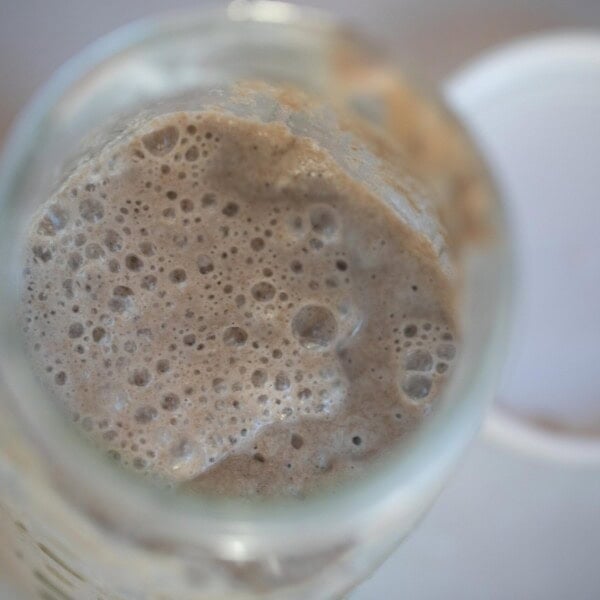
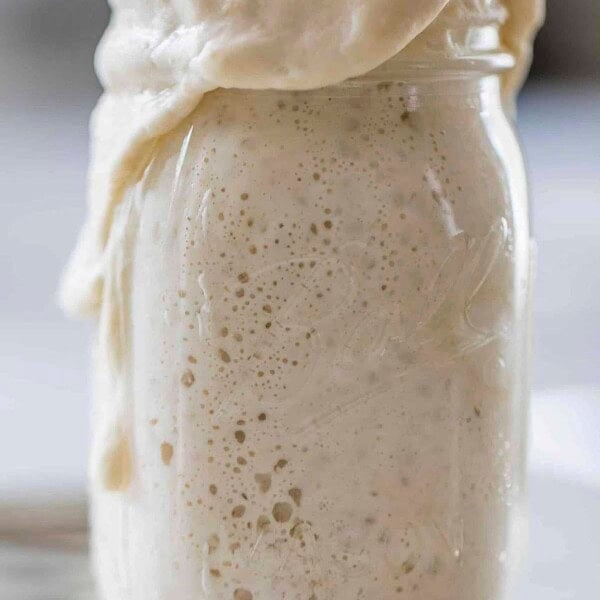
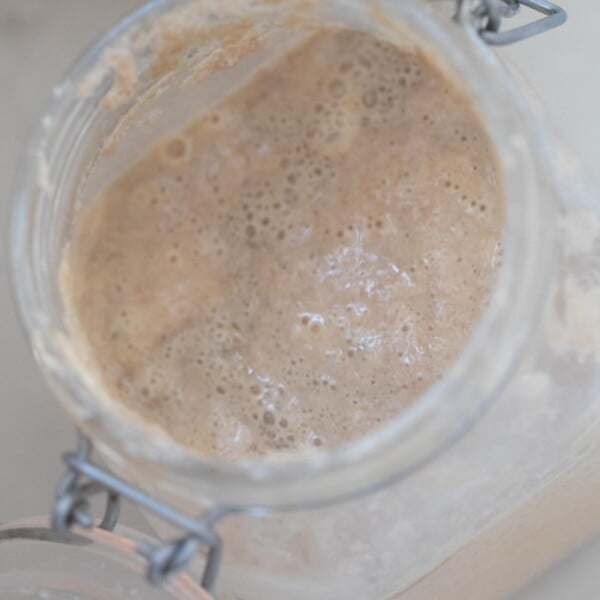






Hi Lisa, I’ve being following your recipe on how to make a sourdough starter, following you on YouTube and I am on day 7 with my starter. Therefore, I have a few questions to ask you and that I would like to know moving forward with the maintenance of my starter. One is once my starter passes the float test and of course at its peak, if I am not going to use it or bake with it, can I put in the refrigerator?..second is, once I am ready to use it and take it out again, do I have to feed it again to get it active/relieve again?..also, I am very confused about when transferring my starter into a clean jar or bowl. The part that I am confused about is that when it comes to feeding my sourdough starter to get active/relieve again, do I feed only the amount of starter that I am going to used into a clean jar for a recipe or do I feed only my sourdough starter and then weight or take out the amount that I need for that specific recipe?..that part I don’t understand and I am so confused about. Lastly, when my starter is as it’s peak and when I take out that amount for that specific recipe, do I have to feed it again and wait for rising 4-6 or 12 hours when it at it’s peak again to store back into the refrigerator?..please help🙏, I will really appreciate it. Thank you!
Yes, if you don’t plan to bake with it, put it in the fridge. When you are ready to bake with it, you will need to pull it out of the fridge and feed it again so that it becomes active. You can feed your starter as much as you want! I like to feed it more than I need, so that then I could use it for other discard recipes that don’t require active starter. To your last question, no. Just put it back in the fridge after you use it. It does not need to be fed again.
I’m on day 10 of my starter. I started feeding it every 12 hrs on day 6. By the end of day 7 it was not ready (I did the float test) and it was watery in the center. Starting on day 8 I started feeding 1c flour to 3/4 c water. The consistency improved. I’ve continued to feed every 12 hrs and tested in the morning each day before feeding to see if it’s ready and this morning (day 11) it still is not floating or growing in size. I moved it to a location further away from any windows so it should be warmer. It’s 70 degrees in my house. What else can I do? What’s the longest I should continue feeding? If I still don’t have growth or pass the float test after how much time do I have to discard all of it and start over from scratch? Is it imperative to use a wooden spoon and never have any kind of plastic spoon in the starter?
2wks old-68/70 degrees in my house-leaving it on my counter
IT FLOATS!! 😀
But it doesn’t double in size.
But it smells good!
When it comes time to bake, do I use my normal GOLD medal all purpose flour as the added flour in the recipe or stick to using unbleached?
Do you think it’s ready??
I would try baking with it to see how it goes. It will strengthen over time.
Hi Lisa. I love your videos, they are super inspiring to me so thank you. I had a question about starter as I have just starting making one. It doubles in size after 2-3 hours but it doesn’t float in water and is relatively thin. I’m using wholewheat flour and its feeding ratio is 1:1:1. Am I doing something wrong? I should add I live in a hot country and it’s very humid at night / during the day inside. Thank you in advance?
You could try feeding it 3/4 cup water, 1 cup starter, to 1 cup flour. That may help since you live in such a hot and humid area!
Thank you Lisa! I will give it a go 🙂
Hi Lisa, if my sample sinks after it floats, (about 10 minutes,) is that typical? Thanks for any advice!
Yes, you are really only looking for it to float right away.
Great to know! Thanks!
If I feed my starter and put it in the fridge for a week, will it be ready to set out to warm and double in size a week later or should I feed it first?
Second question, I started doing sourdough with an einkorn starter and was feeding it 1:1:1 but recently read that it should be fed 1:1:1/2 (the 1/2 being the water) I tried several sourdough recipes, some worked out and others did not. I am wondering if I can only use einkorn sourdough recipes with my einkorn starter? Any thoughts?
Feed it as soon as you take it out of the fridge and stick with Einkorn recipes! It has a different hydration requirement than other types of flours, so it can take some adjusting.
Everything I do seems to be spot on while making my bread, from beginning to oven. My internal temp is 205. My loaves are gummy, every time. Suggestions!!!
I’m not an experienced baker at all, so I’m not sure. Are you letting your loaf cool completely before slicing?
Lisa,I recently found your channel on YouTube,(maybe about a month ago), and have watched so so many videos and you have officially inspired me to start this sourdough journey for myself, although I was discouraged until I found you. My starter is now 8 days old, but my house stays kind of cold during winter (usually around 65-70). I have kept my starter on the mantle above our wood burning stove (we have fans to push the heat so it never gets too warm up there) but it seems like it’s still not quite fermented or yeasty enough to use and I’m terrified to give up on it. When I go to discard and feed it, it does have bubbles on the surface, but I’ve only witnessed a rise on day 2, which I think may have been just a bacterial bloom. Since then, I’ve not seen any rise in it. It smells a lot less ‘stinky’ than it did, maybe leaning more toward the yeasty side but not quite there yet. My question is, should I maybe just wait until it’s staying warmer in my home, or try to establish it for longer? And if I have to wait longer because it’s being sluggish, do I continue to discard every day, or just feed it and see what happens? I’m sorry, I’m so confused and I’ve never known anyone that has any clue about sourdough. I really hope I wasn’t confusing, and maybe you could help. Thank you in advance, and never stop what you’re doing. You’re a huge inspiration and I look up to you as a mother of 3 kids. I just wanna bake things for them.
It can take up to 2 weeks for your starter to perform.